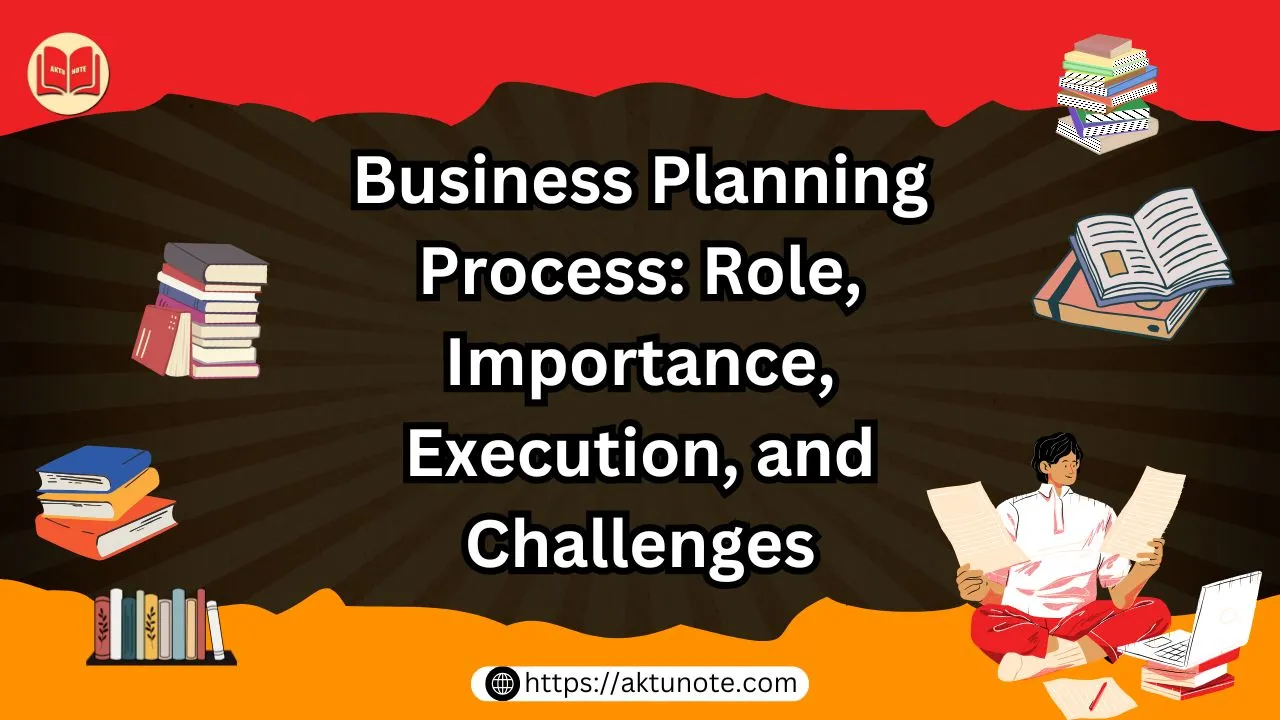The business planning process is the foundation of any successful enterprise. It involves outlining the objectives, strategies, and resources necessary to achieve business goals. A well-crafted business plan acts as a roadmap, guiding entrepreneurs through each stage of growth while providing a framework to measure progress and adapt to changes.
What is the Business Planning Process?
The business planning process is a systematic approach to defining business goals, developing strategies to achieve them, and outlining the resources and timelines required. It involves research, analysis, strategy formulation, and documentation to ensure that every aspect of the business is considered.
Key Steps in the Business Planning Process
The business planning process involves structured steps to conceptualize, analyze, and implement a business idea. It starts with idea identification, where goals and objectives are defined. Market research follows to understand customer needs and industry dynamics. Entrepreneurs then develop a business model and craft a detailed business plan, including financial projections, marketing strategies, and operational plans. Finally, the plan is reviewed, revised, and prepared for execution.
- Idea Generation and Vision Development: Identifying the business concept and defining the vision and mission.
- Market Analysis: Conducting research to understand industry trends, customer needs, and competition.
- Goal Setting: Establishing specific, measurable, achievable, relevant, and time-bound (SMART) objectives.
- Strategy Formulation: Developing strategies for marketing, operations, finance, and human resources.
- Resource Planning: Identifying the required financial, human, and technological resources.
- Risk Assessment: Analyzing potential risks and devising mitigation strategies.
- Documentation: Creating a comprehensive business plan document.
- Implementation and Monitoring: Executing the plan and tracking progress to ensure alignment with objectives.
Role of the Business Planning Process
The business planning process plays a pivotal role in translating an idea into a viable venture. It provides a roadmap for decision-making, helps identify potential risks, and aligns resources to strategic objectives. By fostering clarity and focus, it ensures that businesses operate efficiently and adapt to market changes. It also facilitates communication with stakeholders, such as investors, partners, and employees.
1. Strategic Direction
The business planning process provides clarity on the long-term vision of the organization and defines the strategic direction to achieve it. It helps entrepreneurs prioritize tasks and allocate resources efficiently.
2. Decision-Making Framework
A business plan acts as a reference point for decision-making. It enables entrepreneurs to evaluate options and make informed choices based on the predefined goals and strategies.
3. Financial Management
The process includes detailed financial planning, helping businesses budget effectively, forecast revenues, and manage expenses. This ensures financial stability and reduces the risk of overspending.
4. Resource Allocation
By identifying the resources required for various business activities, the planning process ensures optimal utilization of financial, human, and technological assets.
5. Risk Management
A business plan identifies potential risks and outlines mitigation strategies, enabling entrepreneurs to prepare for uncertainties and minimize disruptions.
6. Communication Tool
For startups and small businesses, a business plan is essential for communicating the value proposition to stakeholders, including investors, partners, and employees.
Importance of the Business Planning Process
A robust business planning process is essential for minimizing risks, securing funding, and achieving long-term goals. It helps entrepreneurs evaluate feasibility, allocate resources effectively, and anticipate challenges. By setting measurable objectives and timelines, it ensures accountability and progress tracking. Moreover, it provides a comprehensive framework to adapt to dynamic market conditions, increasing the chances of success.
1. Provides a Roadmap
A well-structured business plan offers a clear roadmap for achieving short-term and long-term goals. It helps businesses stay on track and measure progress effectively.
2. Enhances Focus and Accountability
By defining specific objectives and timelines, the planning process ensures that all team members remain focused and accountable for their roles and responsibilities.
3. Facilitates Funding
A detailed business plan is often a prerequisite for securing funding from investors, banks, or financial institutions. It demonstrates the viability and profitability of the business.
4. Improves Market Understanding
The research and analysis conducted during the planning process provide valuable insights into customer needs, market trends, and competitive dynamics.
5. Encourages Innovation
The planning process encourages creative problem-solving and innovative thinking by exploring multiple strategies to achieve business objectives.
6. Supports Growth and Scalability
A business plan outlines strategies for expansion, enabling businesses to scale operations and enter new markets effectively.
Steps in the Business Planning Process
The process involves several key steps, starting with setting objectives and conducting market research to identify target customers and competition. Developing a business model outlines the value proposition and revenue streams. The financial plan includes budgets, cash flow forecasts, and profit projections. Entrepreneurs then draft the marketing strategy, operational plan, and risk assessment. The final step involves validating the plan and preparing for execution.
1. Defining the Business Concept
- Identify the problem the business aims to solve.
- Develop a clear value proposition that differentiates the business from competitors.
2. Conducting Market Research
- Analyze the target market, customer segments, and buying behavior.
- Study competitors’ strengths, weaknesses, opportunities, and threats (SWOT).
- Identify market trends and potential opportunities for growth.
3. Setting Objectives
- Define SMART objectives that align with the overall vision of the business.
- Examples include revenue targets, customer acquisition goals, or market expansion plans.
4. Strategy Development
- Marketing Strategy: Outline plans for branding, advertising, pricing, and sales.
- Operational Strategy: Define processes for production, supply chain, and logistics.
- Financial Strategy: Develop budgets, revenue projections, and funding requirements.
- HR Strategy: Plan for recruitment, training, and talent retention.
5. Creating a Financial Plan
- Estimate startup costs, operating expenses, and revenue projections.
- Develop cash flow statements, profit and loss statements, and balance sheets.
- Identify funding sources, such as self-financing, loans, or investors.
6. Risk Analysis
- Identify internal and external risks, such as market competition, economic changes, or operational challenges.
- Develop contingency plans to mitigate identified risks.
7. Documentation
- Compile the business plan into a structured document that includes an executive summary, market analysis, strategy details, and financial projections.
8. Implementation
- Execute the strategies outlined in the business plan.
- Assign tasks and responsibilities to team members.
9. Monitoring and Evaluation
- Regularly track performance metrics to assess progress.
- Update the business plan as needed to reflect changes in the market or business environment.
Execution of the Business Plan
Executing a business plan requires effective implementation of outlined strategies. Entrepreneurs need to allocate resources, set up operations, and monitor progress against milestones. Regularly reviewing performance metrics and making necessary adjustments ensures alignment with objectives. Communication and coordination among team members, along with stakeholder engagement, are critical for successful execution.
1. Setting Up Systems
- Implement systems and processes to streamline operations.
- Use project management tools to track progress and manage workflows.
2. Building a Team
- Recruit skilled professionals who align with the business’s vision and values.
- Provide training and resources to enable employees to perform effectively.
3. Resource Allocation
- Allocate resources efficiently to ensure that all departments function optimally.
- Monitor resource utilization to prevent wastage or shortages.
4. Establishing Metrics
- Define key performance indicators (KPIs) to measure success.
- Regularly review metrics to identify areas for improvement.
5. Adapting to Changes
- Stay flexible and adapt the plan to accommodate market shifts, technological advancements, or customer feedback.
Challenges in the Business Planning Process
The business planning process faces challenges like incomplete market data, which can hinder accurate projections. Resource constraints may limit the ability to conduct thorough research or implement strategies. Unforeseen market changes and regulatory hurdles add complexity. Additionally, lack of stakeholder alignment or over-ambitious planning can lead to execution failures. Entrepreneurs must remain adaptable and proactive to navigate these challenges effectively.
1. Inaccurate Market Research
Poor research can lead to unrealistic assumptions about customer needs, market demand, or competition.
- Solution: Use reliable sources and conduct thorough primary and secondary research.
2. Overestimation of Financial Projections
Overly optimistic revenue estimates or underestimating costs can lead to financial instability.
- Solution: Base projections on realistic assumptions and industry benchmarks.
3. Resistance to Change
Employees or stakeholders may resist changes introduced through the business plan.
- Solution: Communicate the benefits of the plan and involve stakeholders in the decision-making process.
4. Insufficient Resources
A lack of financial, human, or technological resources can hinder the execution of the business plan.
- Solution: Prioritize tasks and seek additional funding or partnerships as needed.
5. Unforeseen Risks
External factors, such as economic downturns or regulatory changes, can disrupt the business plan.
- Solution: Develop contingency plans and stay updated on industry developments.
6. Poor Monitoring and Execution
Failure to monitor progress or implement the plan effectively can lead to missed objectives.
- Solution: Use performance tracking tools and hold regular review meetings.
For More Content Check Out :- KMBN 302
Conclusion
The business planning process is an indispensable tool for entrepreneurs, providing a structured approach to achieving their goals. It clarifies the vision, enhances decision-making, and ensures efficient resource allocation. While challenges like market uncertainties, resource constraints, and resistance to change may arise, they can be mitigated with careful planning, realistic assumptions, and adaptive strategies.
A well-executed business plan not only serves as a roadmap for growth but also builds credibility with stakeholders and fosters long-term success. Entrepreneurs who master the art of business planning position themselves to navigate the complexities of the business world and seize opportunities with confidence.


We are so grateful for your Work — It really help us in exams.
Hello Sanjay,
We are glad that our work helps you clearing your exam.
Regards
Abhishek